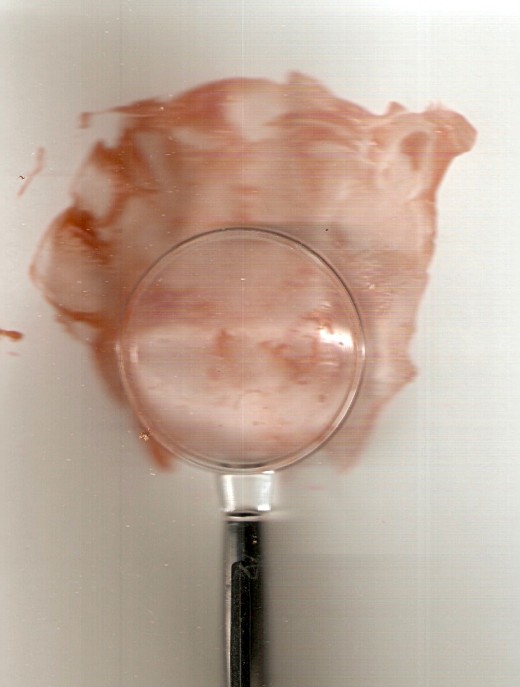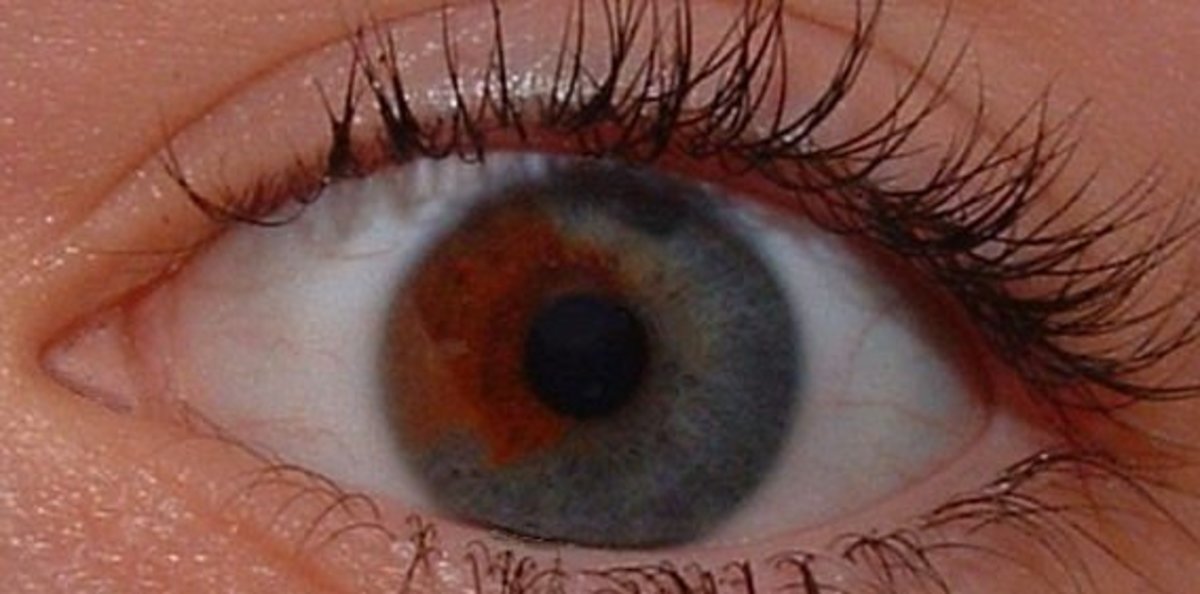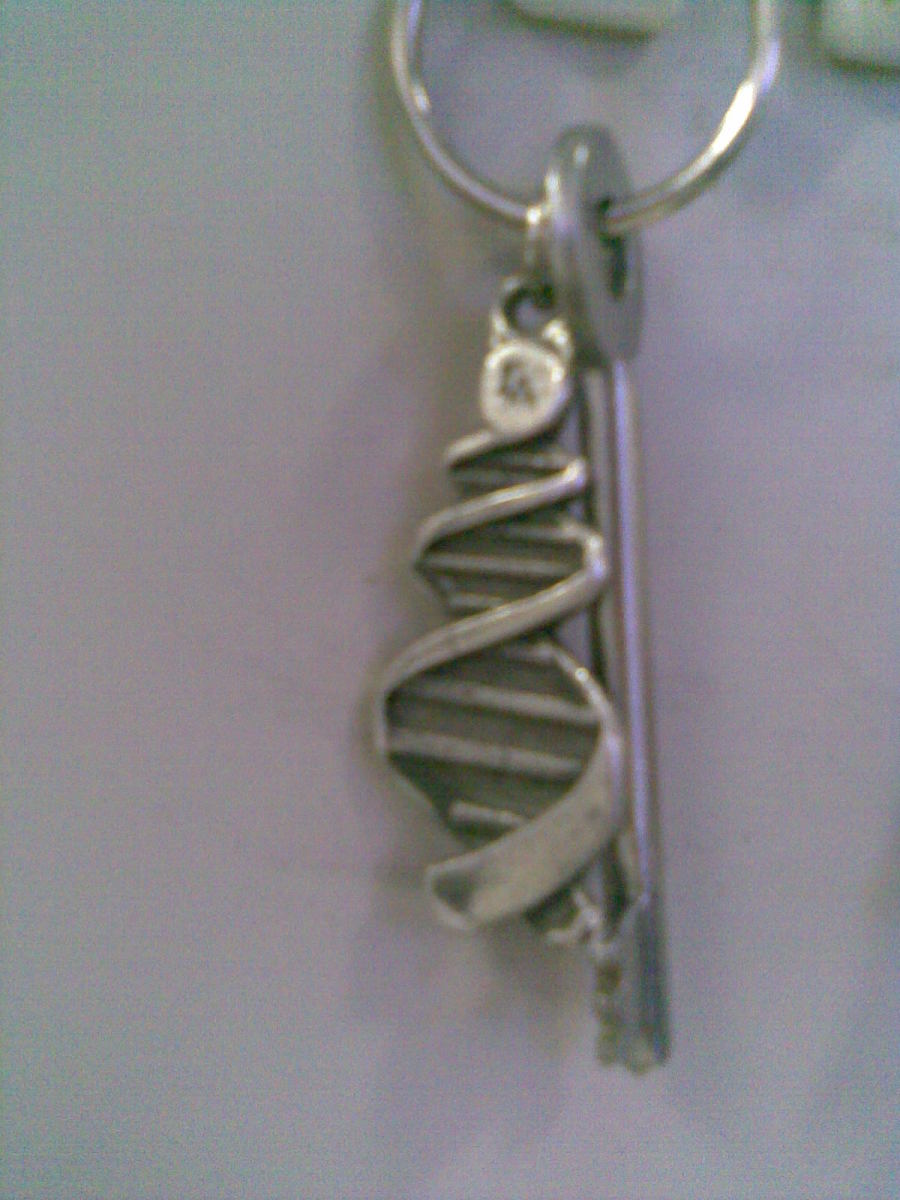Criminals Can neither Fool DNA Fingerprinting nor Escape from It
A DNA profile can be prepared from a drop of blood

Photo of cover of the book "The Blooding" by Joseph Wambaugh who chronicled the first case of DNA fingerprinting

DNA fingerprinting identifies a person with certainty
By Conrado D. Fontanilla
It used to be fingerprinting, now DNA fingerprinting is in vogue. In criminal investigation, called forensics, the DNA analysis has been accepted by the justice system of many countries as a definite way to establish identity of a person. Called DNA fingerprint or DNA profile it has been accepted as an evidence in court in United Kingdom since 1986, and in the United States since 1987.
DNA means deoxyribonucleic acid that is the heredity material in a person.
“In a criminal case, if a suspect’s profile does not match that of the evidence, he or she can be cleared, or excluded, as the criminal” (Cummings, M. Human Heredity: Principles and Issues. 2009:248).
Alec Jeffreys, a British geneticist with the Leicester University, developed DNA fingerprinting in 1984.
DNA fingerprinting
A DNA fingerprint can be prepared from hair, saliva, cigarette butts, used toothbrush, blood, skin, semen, licked postage stamp, and mummies as old as over 2,000 years.
"DNA is also sensitive -- just one forty-millionth of a drop of blood can produce a result" (Platt, R. "DNA Analysis." Forensics. 2005:26-27)
A person has 46 chromosomes. A chromosome consists of thousands of genes. A gene consists of twins, one of the twins is called allele. An allele is located in one of the double strands of DNA; the other allele is located in the other DNA strand. An analysis of a DNA sample shows the alleles that it contains.
Allele short tandem repeats (STRs) are used.
DNA profile starts with short tandem repeats (STRs) consisting of minisatellites found in the chromosome. Each minisatellite is composed of DNA sequences of 2 to 9 pairs of bases like GGTTG, GGTTG, GGTTG, GGTTG, GGTTG which is a case repeated five times. G means guanine, an amino acid; T means thymine, another amino acid. Sequence is important. There are thousands of STRs in a chromosome.
There is only one individual found with a specific STRs in a population of 100 trillion with the use of 13 STRs, called CODIS (combined DNA index system) which is the standard in the United States.
The earth has only 6 billion people (in contrast to the 100 trillion domain of CODIS) that is why DNA profile-CODIS is reliable in establishing the identity of a person, according to Cummings. That is, a human population of 100 trillion can exhaust the domain of CODIS -- an improbable prospect for a long time to come. Only when the domain had been exhausted (the population had grown100 trillion and one) that a double entry (two persons with the same STRs) is possible. Persons who are numbered from "100 trillion and one" and beyond can escape from DNA fingerprinting. A very, very long prospect for criminals; besides the CODIS can be restarted!
The use of less number of STRs, say 5, will also work. However, its scope may be overwhelmed in a short time.
Definite description
STRs are actually definite descriptions if the base pairs and their sequence are converted into terms or symbols. For example in the DNA base pairs and sequence GGTTGGGTTGGGTTGGGTTGGGTTG (where GGTTG is repeated five times):
In a minisatellite, the amino acid and the sequence of amino acids is important; the sequence is arranged by nature or by mutation. That is why the sequence cannot be tampered with. DNA is composed of subunits called nucleotides. The arrangement of three nucleotides make for a genetic code (or genetic information) that specifies one kind of protein, composed of amino acids, to be produced. That protein is the one collected in a forensic investigation.
A small sample can be amplified where the amount of DNA is increased such that it is amenable for analysis, according to Platt.
The amino acids and their sequence make up a definite description, for example: “Guanine followed by guanine followed by thymine followed by thymine followed by guanine followed by guanine followed by guanine followed by thymine followed by thymine followed by guanine followed by guanine followed by guanine followed by thymine followed by thymine followed by guanine followed by guanine followed by guanine followed by thymine followed by thymine followed by guanine followed by guanine followed by guanine followed by thymine followed by thymine followed by guanine followed by guanine followed by guanine followed by thymine followed by thymine followed by guanine.”
I revised a Triond content “How to Identify a Person by DNA Fingerprint” into this Hub.
Under CODIS, there is only one definite description (consisting of amino acids and their sequence of a DNA sample from a real human population) that makes for a person. If by law, a label (name is the commonsense term) had been assigned to an individual who owns STRs analyzed with the use of CODIS, the individual is the verifier of that definite description. That is, the STRs can be matched with a person with a legal name. It is up for the law to establish the match between a legal name and the actual person.
First and successful use of DNA fingerprinting
In Leicester, England, two rape with murder cases were under investigation. Lynda Mann and Dawn Ashworth, teenagers, were raped and murdered in almost the same place three years apart. The police arrested and jailed one suspect, a kitchen porter, who confessed to one crime. He had engaged in several flashings before and he might have thought that his confession could expiate for his sins. But his parents said he had been subjected to a lot of interrogations by the police that confession might be a way for him to escape from further badgering.
However, Alec Jeffreys who subjected the specimens to his tests, found that the DNA found in the semen of the kitchen porter did not much those that were found in the victims. In fact, Jeffreys found that the DNAs in the semen matched, meaning that the two girls were raped and murdered by one man. The police released the kitchen porter, that is, he was eliminated as a suspect in the crimes by means of DNA fingerprinting.
The culprit, Colin Pitchfork, attempted to fool the investigators. He paid Ian Kelly to submit a test blood sample that belonged to Ian for DNA fingerprinting. In his passport, Colin inserted Ian's photo for presentation to the police and schooled him on his family so he could fill up the information sheet. Ian forged Colin's signature that a cursory look could not detect the difference from Colin's genuine signature. Police had collected blood samples for DNA fingerprinting from over 4,000 persons in four years. They were all negative according to the DNA fingerprinting.
Only a few more persons within the scope of the investigation were left for blooding when Ian became gullible in a pub. One person who overheard Ian bragging about the conspiracy tipped off the police. Pitchfork confessed to his crime even before the DNA fingerprinting could be started. His blood was examined by DNA fingerprinting; his DNA matched those in semen obtained from the victims. Pitchfork's heinous crime is the subject of the book "The Blooding" by Joseph Wambaugh published in 1989 (http://www.localhistories.org/pitchfork.htmlct).
Pitchfork was a sociopath.
The identity of a rapist who had left marks on his victim can be easily established by hair, by semen, by fingermarks, or sweat. This method overrides the fingerprint method although this is still reliable. Only that there is difficulty in getting fingerprints. Besides a criminal may wear gloves and fool the forensics. The police failed to obtain any fingerprint of Pitchfork on his victims. There was no way for him to escape from DNA fingerprinting. He turned out to be a sociopath similar to psycopath. He had no remorse about his crimes and relished narrating them as long as he controlled the pace with less interruptions from the police. But he told the truth.
New entries as of October 16,2011
Platt mistaken?
Richard Platt, author of "Forensics" might not have been aware of CODIS of the United States when he wrote:
"However, DNA tests are not foolproof. Samples can be polluted with DNA from other sources, confusing the results. On small islands where everyone is related the DNA is very similar, and DNA profiling is not a very reliable way of proving guilt" (Platt, R. "DNA Analysis." Forensics. 2005:26-27)"
Platt did not mention CODIS in this book.
In CODIS (combined DNA index system), identify of each of 100 trillion people (if all were around, or each once lived and DNA of each were available) is established, each distinguished from the other.
New entries as of October 18,2011
Platt appears to be mistaken about identical twins, to wit:
“Identical twins do not just look similar. They are exactly the same _ down to the last gene. DNA analysis cannot tell them apart but can easily distinguish between ordinary siblings” (Platt, R. “DNA Analysis.” Forensics. 2005:26-27).
In identical twins “only one egg is fertilized; but during the cleavage of this single zygote into two cells, the resulting pair somehow become separated” (Encyclopedia Britannica 2009).
Each cell is separately implanted in the uterus and grow into one person.
“They are often breathtakingly similar in appearance, frequently down to very fine anatomic and biochemical details (although their fingerprints are differentiable)” (Encyclopedia Britannica 2009).
However, the proteins of each of identical twins are controlled by several genetic codes or genetic information. Nucleotides make up a gene; they make up the minisatellite repeats that are used in DNA fingerprinting analysis (Cummings, M. Human Heredity, Principles and Issues. 2009). That is why between identical twins, “fingerprints are differentiable.”
In analyzing identical twins, we should not stop at the gene level because a gene is composed of thousands of nucleotides. Three nucleotides in specific sequence encode a genetic information that control the production of a protein in the body, like fingerprint and mole.
I have nieces who are identical twins. I distinguish one from the other by means of small mole near the nose bridge; one has it, the other does not have it. This mole is a manifestation of a genetic code originating from three nucleotides in sequence (which is detected by a gene sequencing machine). Nucleotide sequence is fixed by nature, or evolution, or mutation that is why it cannot be tampered with. Change the sequence of three nucleotides and you produce a different protein.
Therefore, DNA fingerprinting distinguishes between identical twins.
New entries as of May 18,2013
Editing on identical twins. I have just read yesterday the book "The Blooding" by Joseph Wambaugh. He quoted Alec Jeffreys, inventor of DNA fingerprinting, to wit:
"...with a world population of only five billion it can be categorically said that a genetic fingerprint is individually specific and that any pattern, excepting identical twins, does not belong to anyone on the face of this planet who ever has been or ever will be" (Wambaugh, J. The Blooding. 1989:94. Emphasis supplied).
Granting that Wambaugh quoted Jeffreys correctly, I defer to Jeffreys. However, I let my entries as of October 18,2011 stand as is so that the reader can compare this new entries with them. I wish Richard Platt mentioned his references in writing his book. I am still puzzled by the mole in the nose bridge of one of my identical twin nieces.
DNA fingerprinting distinguishes between fraternal twins
Fraternal twins are different genetically. They are formed from two separate eggs fertilized by two different male “seeds.” The two zygotes that developed from the two eggs are implanted in the uterus and give rise to two persons.
An egg has a unique genetic make up; likewise a "seed" has a unique genetic make up. Therefore, DNA fingerprinting distinguishes between fraternal twins.










